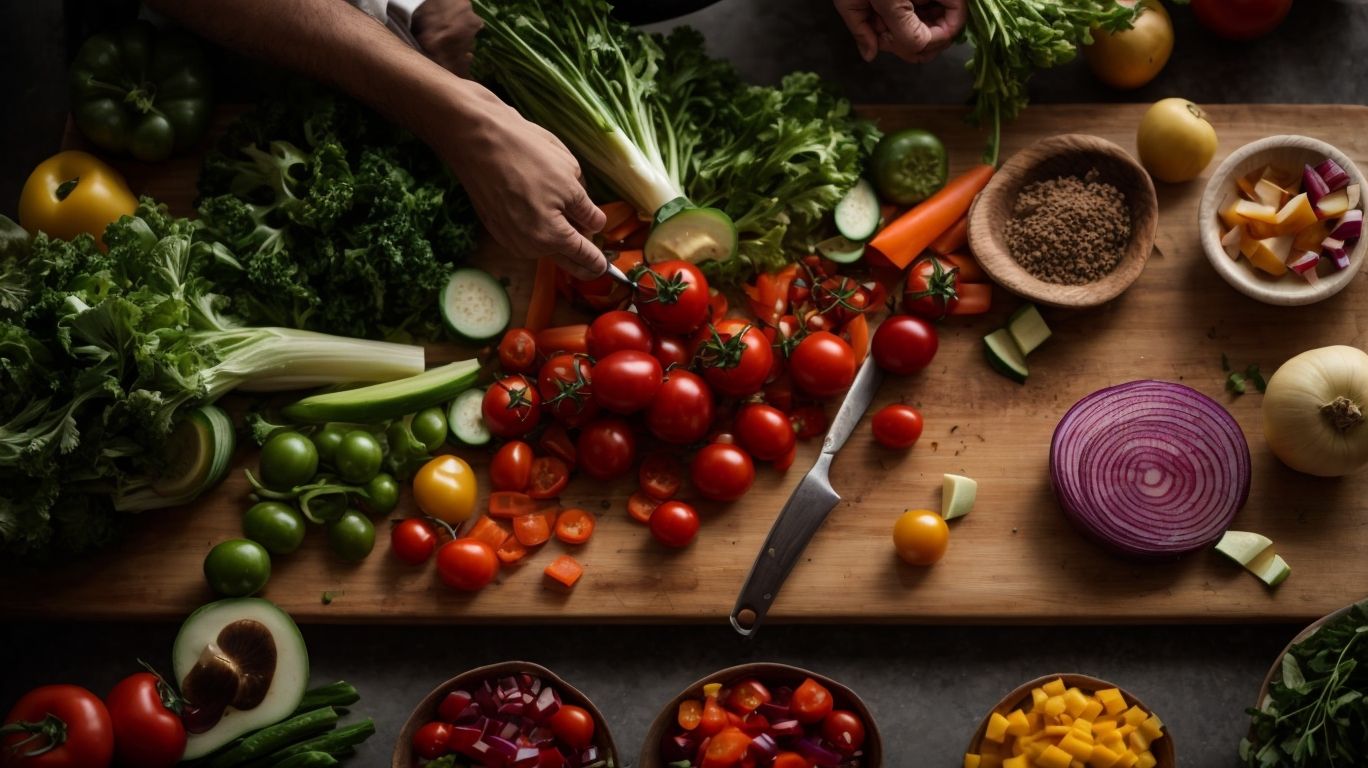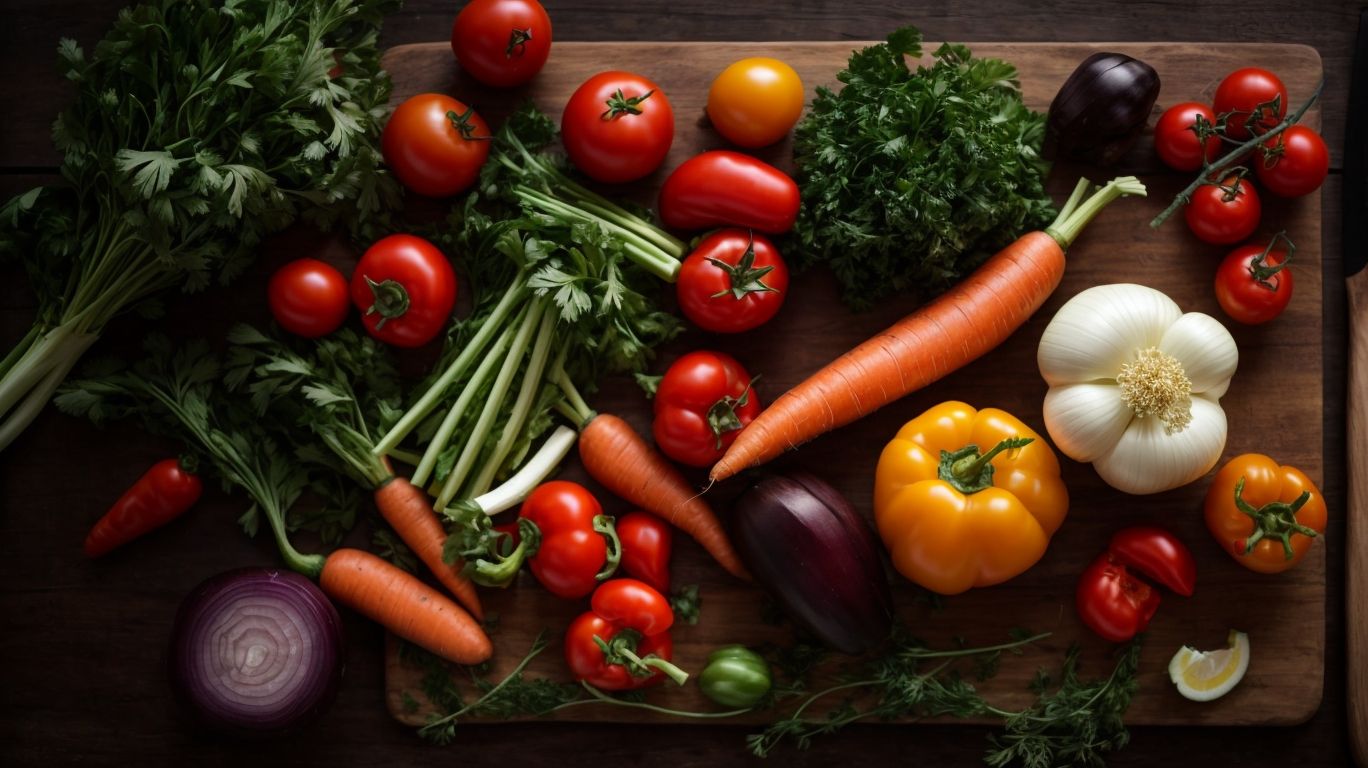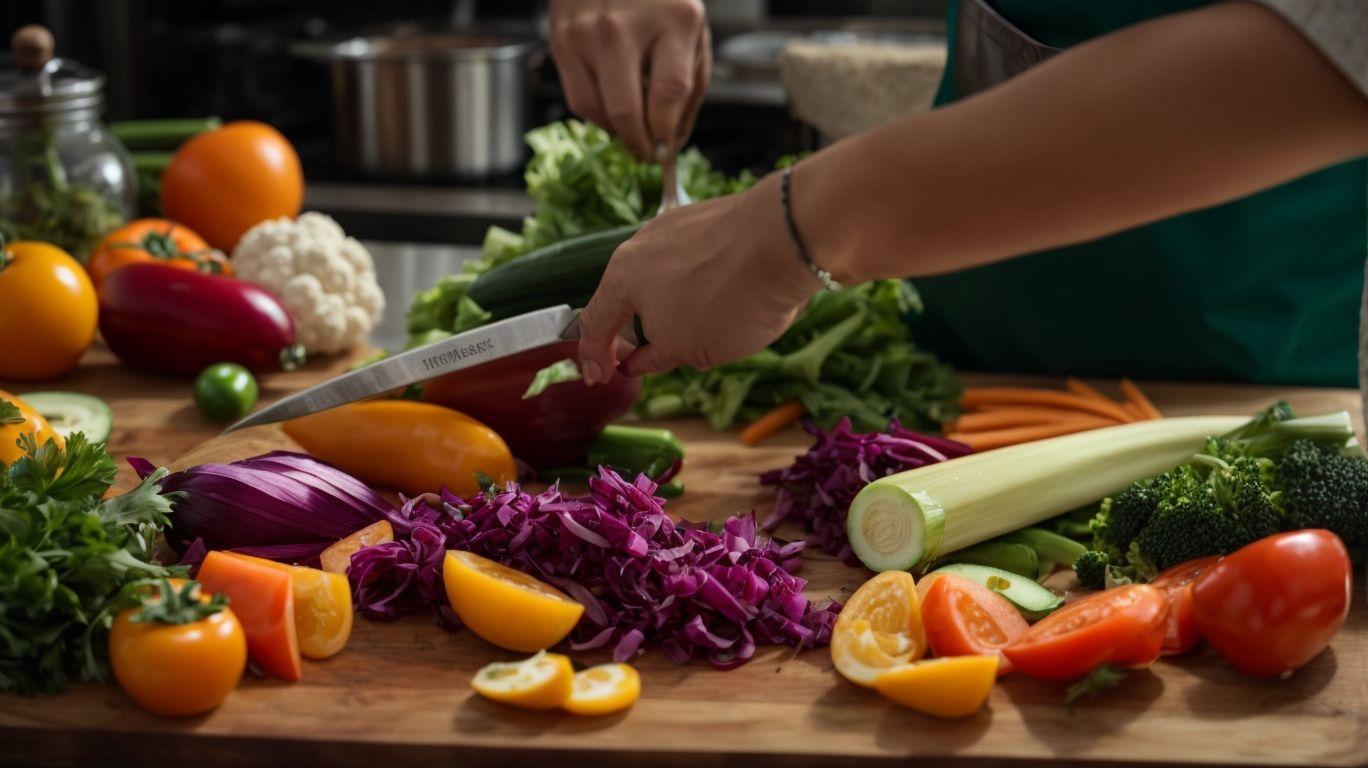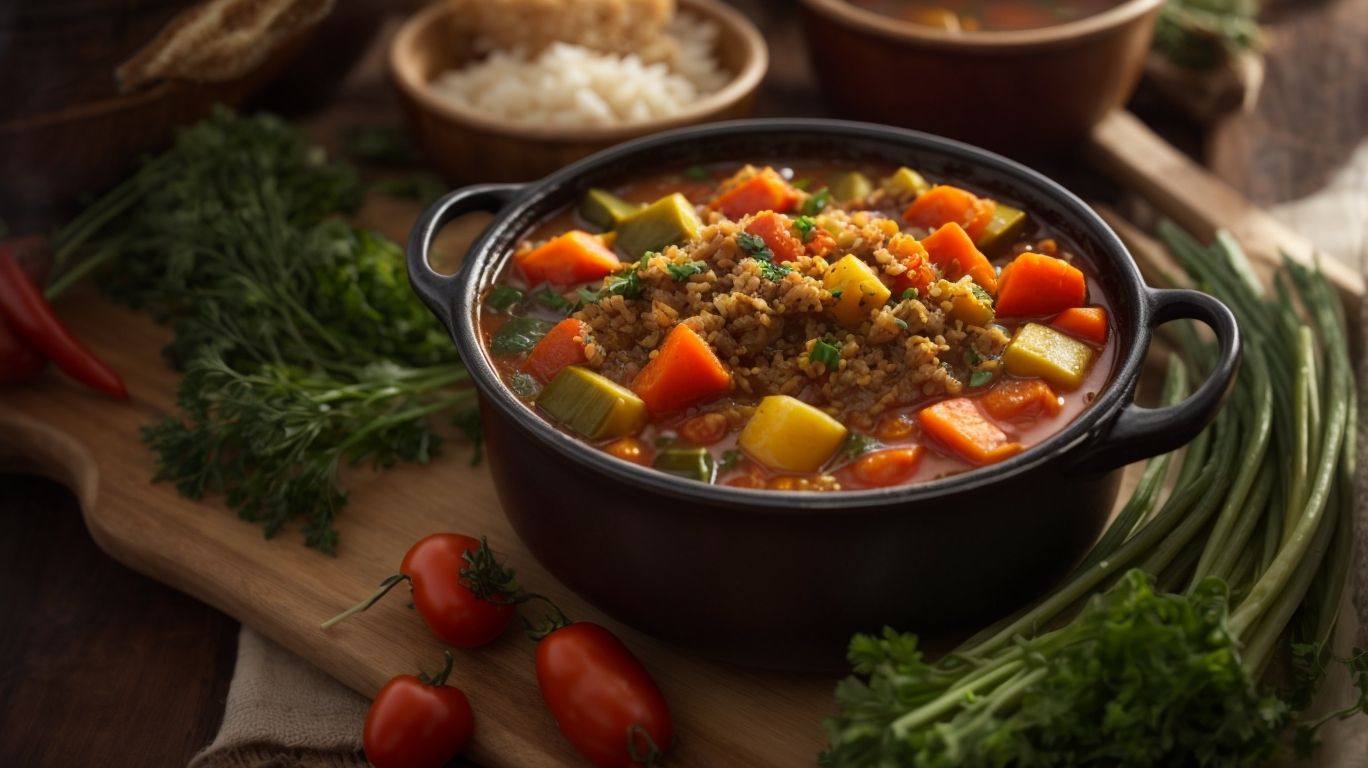How to Cook Vegetable Stew for Rice?
Are you looking to elevate your cooking skills and impress your dinner guests? Look no further than this article by the award-winning culinary blogger, Chris Poormet.
In this comprehensive guide, Chris shares his secrets for creating a delicious vegetable stew that pairs perfectly with rice. From selecting the right ingredients to mastering the cooking process, Chris provides step-by-step instructions that will have you serving up restaurant-quality dishes in no time.
So grab your apron and get ready to whip up a delectable meal that will delight your taste buds!
Key Takeaways:
About the Author: Chris Poormet
Chris Poormet, the renowned owner of Poormet.com and the recipient of the prestigious Culinary Blogger of the Year award, brings his culinary expertise to the digital realm. As a former chef acclaimed for his skill in food photography, Chris has garnered a dedicated following eager to indulge in his innovative recipes and insightful tips.
Chris’s journey into the world of culinary arts began with a passion for creating visually stunning dishes that not only tantalize the taste buds but also please the eyes. His background as a chef in top-rated restaurants equipped him with a deep understanding of flavors and presentation, which translates seamlessly into his captivating food photography. Through his blog, Poormet.com, Chris showcases a fusion of creativity and technique, offering a fresh perspective on traditional recipes and culinary trends.
What Ingredients Do You Need for Vegetable Stew?
When preparing a delightful vegetable stew, key ingredients include paprika, tomato paste, a variety of veggies, and an assortment of flavorful spices and herbs. This vegetarian or vegan dish offers a comforting and healthy dining experience, perfect for those seeking a delicious yet straightforward meal.
Along with these essential components, another crucial element for a well-rounded vegetable stew is the choice of broth or liquid base used. Whether opting for a vegetable stock, mushroom broth, or a rich tomato sauce, the liquid plays a significant role in infusing the dish with depth of flavor.
The texture of the veggies in the stew can enhance the overall dining experience. While some prefer their vegetables tender, others enjoy a bit of crunch; it all depends on personal preference and the desired mouthfeel of the dish.
Vegetables
In vegetable stew preparation, the selection of fresh and vibrant vegetables such as onions, carrots, mushrooms, and peas is crucial to infuse the dish with diverse flavors and textures.
Each vegetable plays a vital role in creating a harmonious blend of flavors.
- The onions provide a sweet and savory base, enhancing the overall richness of the stew.
- Carrots add a subtle sweetness and vibrant color, while their natural sugars help balance the acidity of other ingredients.
- Mushrooms bring a deep umami taste, lending a meaty texture to the stew, perfect for those seeking a vegetarian option with a hearty feel.
- Lastly, peas offer a burst of freshness and a pop of color that brightens the dish.
Spices
To elevate the flavor profile of your vegetable stew, incorporating a blend of aromatic spices such as paprika, garlic, and a medley of herbs is essential for creating a savory and enticing dining experience.
Each spice plays a unique role in enhancing the overall taste, with paprika adding a subtle smokiness, garlic lending a rich depth, and a mixture of herbs providing freshness and complexity. By skillfully combining spices in the right proportions, you can achieve a harmonious balance of flavors that truly elevates the dish.
The art of seasoning involves not only selecting the right spices but also understanding how they interact with each other to create a symphony of tastes. Experimenting with different spice combinations allows for culinary creativity and the opportunity to tailor the stew to your personal preferences.
Wash and Chop the Vegetables
Preparing vegetables for the stew involves meticulous washing and chopping to ensure uniform pieces that cook evenly and retain their natural flavors and textures.
When washing vegetables, it’s essential to thoroughly rinse them under cold running water to remove any dirt or residue. For leafy greens like spinach or kale, immerse them in a bowl of water and gently swish to dislodge any impurities. Once clean, pat them dry with a clean kitchen towel.
Regarding chopping, aim for consistent cuts to promote even cooking. A handy tip is to start by cutting vegetables into manageable pieces that are easy to work with. For root vegetables like carrots or potatoes, a uniform size of about 1/2 inch cubes works well for stew.
Sauté the Vegetables
Sautéing the vegetables in a fragrant blend of olive oil enhances their natural flavors, creating a rich foundation of aromas that will permeate the stew with delectable essence.
As the vegetables sizzle in the pan, their colors intensify, releasing a symphony of enticing scents that fill the kitchen with warmth and anticipation. The gentle hiss as they kiss the oil brings out their sweetness, while the savory undertones deepen with each caramelized edge. The olive oil not only serves as a medium for cooking but also infuses the dish with its distinct earthy notes, elevating the overall taste profile.
How to Prepare the Vegetables for the Stew?

Credits: Poormet.Com – Albert Perez
Preparing the vegetables for the stew involves washing, chopping, and sautéing them to perfection, ensuring a harmonious blend of flavors and textures in every spoonful of the dish.
Start by carefully rinsing the vegetables under cold running water to remove any dirt or residue, ensuring freshness and cleanliness. Chopping them into uniform sizes not only aids in even cooking but also enhances the aesthetic appeal of the final dish. Then, the art of sautéing comes into play, where lightly browning the vegetables in a hot pan with a drizzle of olive oil can unlock their inherent flavors and create a delicious foundation for your stew. These preparatory stages are pivotal in infusing richness and depth into the stew, elevating it from ordinary to extraordinary.
Choose the Right Broth or Stock
Selecting the appropriate broth or stock is crucial in developing the foundational flavors of your vegetable stew, ensuring a harmonious and well-balanced taste profile that delights the palate.
When choosing a broth or stock for your vegetable stew, consider the depth of flavor it can bring to your dish. A rich vegetable broth can infuse your stew with a robust, savory essence, while a mushroom stock adds an earthy undertone, creating a more complex taste experience. Alternatively, a light miso broth can introduce a hint of umami, enhancing the overall depth of the stew.
Each type of broth or stock has its unique flavor profile, with vegetable stock offering a fresh and bright taste that complements the natural sweetness of vegetables, whereas a homemade bone broth can bring richness and body to the stew, elevating it to a comforting and satisfying meal.
Add the Spices to the Base
Infusing the stew base with a medley of aromatic spices adds depth and complexity to the dish, creating a symphony of flavors that elevate the dining experience to new heights.
The process of incorporating spices into a stew base involves a careful understanding of flavor profiles and how each seasoning can interact with the other ingredients. Herbs like thyme and rosemary bring earthy undertones, while spices such as cumin and paprika add warmth and depth.
By layering these seasonings strategically, one can achieve a harmonious blend that tantalizes the taste buds. The gradual release of aromas during cooking allows the flavors to meld together, resulting in a rich and satisfying dish.
How to Make the Stew Base?

Credits: Poormet.Com – Jordan Brown
Crafting a robust stew base involves infusing a flavorful broth with a harmonious blend of spices, setting the stage for a tantalizing vegetable medley that captivates the senses.
Begin the process by selecting a high-quality broth, either homemade or store-bought, as the foundation for your stew. The key is to simmer the broth gently to allow the flavors to meld together and create a rich base.
- As the broth simmers, carefully add spices such as aromatic bay leaves, peppercorns, and earthy thyme to enhance the depth of flavor.
- Take your time with this step, allowing the spices to release their essence into the liquid.
Once the broth is infused with the fragrant spices, it forms the backbone of your stew, imparting complexity and warmth to each spoonful. This flavorful base serves as the canvas upon which your chosen vegetables and proteins will shine.
Add the Vegetables to the Stew Base
Incorporating the sautéed vegetables into the prepared stew base sets the stage for a simmering infusion of flavors, as the ingredients meld together to create a harmonious culinary masterpiece.
As the sautéed vegetables gently incorporate into the stew base, their aromatic essence begins to intermingle with the rich broth, enhancing the overall depth of the dish. Simmering acts as the catalyst for this flavor fusion, allowing the vegetables to release their natural juices and infuse the entire pot with a savory symphony of tastes.
The transformative effect of this process is remarkable; the once distinct flavors of the individual ingredients now converge, creating a unified taste profile that is greater than the sum of its parts. The vegetables soften slightly during simmering, contributing to the stew’s texture by adding a delicate bite amidst the velvety consistency of the broth.
Simmer the Stew
Simmering the vegetable stew allows the ingredients to intermingle and develop complex flavors and aromas, resulting in a hearty and soul-warming dish that delights the senses.
During the simmering process, the gentle heat gradually breaks down the vegetables, helping them release their natural juices and essences. This slow cooking method ensures that each component of the dish fully imparts its unique taste, contributing to a harmonious blend of flavors. As the stew simmers, flavor infusion occurs, where the spices and herbs permeate every nook and cranny, enriching the overall taste profile. The stew’s transformation is a culinary dance of ingredients coming together, creating a symphony of rich, deep flavors that invite you to savor each spoonful.
How to Cook the Stew?

Credits: Poormet.Com – Russell Thompson
Cooking the vegetable stew involves a delicate balance of simmering the ingredients to perfection, ensuring a symphony of flavors and textures that harmonize in every spoonful of this savory dish.
When embarking on the culinary journey of preparing a vegetable stew, it is vital to start by properly chopping an array of fresh vegetables like carrots, celery, onions, and bell peppers. These vibrant ingredients not only provide a burst of color but also contribute distinct tastes that mingle together during the slow cooking process.
As the ingredients gently simmer in a pot, their natural juices blend, creating a rich and aromatic broth that forms the base of the stew. This simmering stage is where the magic truly happens, allowing the flavors to develop and intensify with each passing minute.
Choose the Right Rice
Selecting the ideal rice to accompany your vegetable stew is essential to create a satisfying dining experience, ensuring a perfect harmony of flavors and textures that complement each other seamlessly.
When deciding on the right rice, consider long-grain varieties like Basmati or Jasmine, known for their light, fluffy texture that works well with the heartiness of the stew. Additionally, short-grain rice such as Arborio or Calrose can provide a creamier consistency, enhancing the richness of the dish.
Opt for whole grain options like brown rice for a nuttier flavor profile and added nutritional benefits. Each type of rice offers a unique character, adding depth and dimension to your culinary creation. Experiment with different varieties to find the perfect match for your vegetable stew.
Plate the Stew and Rice
Artfully plating the vegetable stew alongside the chosen rice adds an aesthetic appeal to the dining experience, elevating the visual presentation and enhancing the overall enjoyment of the meal.
To master the art of plating, consider utilizing contrasting colors and textures to create a visually stunning dish. Place the vibrant and colorful vegetable stew strategically on the plate, ensuring it complements the rice perfectly. Opt for white plates to showcase the colors of the stew effectively. Garnish with fresh herbs or sprinkle toasted sesame seeds for a touch of elegance.
When serving, remember that presentation is key. Serve the dish with precision, ensuring each element is displayed thoughtfully. Embrace negative space to highlight the main components. Consider using side dishes or condiments in small bowls for a polished look.
How to Serve Vegetable Stew for Rice?

Credits: Poormet.Com – Lawrence Green
Serving vegetable stew alongside rice involves a meticulous process of plating, ensuring a visually appealing and gastronomically satisfying dining experience that delights both the eyes and taste buds.
One crucial aspect of serving this dish is the arrangement of the stew and rice on the plate. The combination of colors, textures, and shapes plays a significant role in creating an enticing presentation.
When plating, consider using a shallow bowl or a wide plate to showcase the vibrant colors of the vegetables and the comforting warmth of the rice. Arrange the stew neatly in the center, allowing the colorful vegetables to be prominently displayed.
For a touch of elegance, you can garnish the stew with fresh herbs or a sprinkle of roasted seeds, adding visual interest and complementary flavors to the dish.
Conclusion: Enjoy Your Delicious Vegetable Stew for Rice!
Relish the delightful combination of vegetable stew and rice, a flavorful and wholesome dish that promises a delightful culinary journey filled with savory goodness and nourishing comfort.
The soft and tender vegetables in the stew, soaked in rich, aromatic flavors, perfectly complement the fluffy grains of rice, creating a symphony of tastes and textures in every bite.
The warmth of the dish embraces your senses, offering a comforting hug of flavors that soothe the soul. As you spoon up each mouthful, let the hearty stew dance with the fluffy rice on your palate, creating a harmony of savory notes that leave you craving more.
The melding of the hearty stew and the comforting rice is a true celebration of culinary pleasure, providing a satisfying and fulfilling dining experience that nourishes both body and spirit.
What Spices Should You Use for the Stew?
Selecting the right spices for your vegetable stew is crucial to infuse the dish with rich flavors and aromatic notes that elevate the dining experience. Key spices such as paprika, garlic, and a variety of herbs can add depth and complexity to the stew, creating a delightful fusion of tastes.
When choosing spices for your stew, consider the role each one plays in enhancing the overall flavor profile. For example, paprika brings a smoky sweetness, while garlic offers a pungent kick that harmonizes with the earthy notes of the herbs.
Experimenting with different combinations can unlock a world of culinary creativity, allowing you to tailor the stew to your personal taste preferences. Balance is key; a pinch of cumin can complement the brightness of turmeric, while a dash of cinnamon introduces a subtle warmth to the dish.
Conclusion: What are the Key Features of Vegetable Stew?
The key features of a well-crafted vegetable stew encompass a symphony of flavors, tantalizing aromas, and an abundance of essential nutrients. This hearty dish not only satisfies the palate but also nourishes the body, making it a wholesome and delightful addition to any dining experience.
One of the distinctive elements of a vegetable stew is the harmonious blend of vegetables like carrots, potatoes, bell peppers, and more, each contributing its unique taste and texture.
The medley of spices, from aromatic herbs like thyme and rosemary to warm spices like cumin and paprika, imparts depth and complexity to the stew.
The slow simmering process allows the ingredients to meld together, creating a rich, savory broth that warms both the stomach and the soul.
How to Make the Stew Base More Flavorful?
Enhancing the flavor profile of your stew base involves strategic seasoning and ingredient additions to elevate the taste to new heights of gastronomic delight. By incorporating nuanced flavors, aromatic herbs, and savory spices, you can transform your vegetable stew into a culinary masterpiece that tantalizes the senses.
One effective way to intensify the flavors of your stew is by layering the seasonings throughout the cooking process. Building flavors gradually allows for a harmonious blend of tastes to develop, creating a rich and complex flavor profile. Experimenting with a diverse array of spices such as cumin, paprika, or coriander can add depth and warmth to the stew, while fresh herbs like thyme, rosemary, or basil infuse freshness and vibrancy.
Consider incorporating umami-rich ingredients like soy sauce, miso paste, or Worcestershire sauce to enhance the savory notes in your stew. These umami boosters can elevate the overall taste experience and provide a satisfying richness.
Frequently Asked Questions
How to Cook Vegetable Stew for Rice?
Cooking vegetable stew for rice is a simple and delicious way to add more veggies to your diet. Here’s how to make it perfectly every time.
What vegetables should I use for my vegetable stew?
You can use any vegetables that you like, but some great options for vegetable stew include carrots, potatoes, onions, bell peppers, and tomatoes.
Can I use frozen vegetables for my vegetable stew?
Absolutely! Frozen vegetables are a convenient and affordable option for making vegetable stew. Just be sure to thaw them before adding them to the stew.
How long does it take to cook vegetable stew for rice?
The cooking time for vegetable stew can vary depending on the type of vegetables used. Generally, it takes around 20-30 minutes for the vegetables to become soft and tender.
What seasonings should I use for my vegetable stew?
You can use a variety of seasonings to add flavor to your vegetable stew. Some great options include garlic, thyme, rosemary, and bay leaves.
Can I make vegetable stew ahead of time?
Yes, you can make vegetable stew ahead of time and store it in the fridge for up to 3-4 days. Just reheat it in a pot on the stove before serving.






